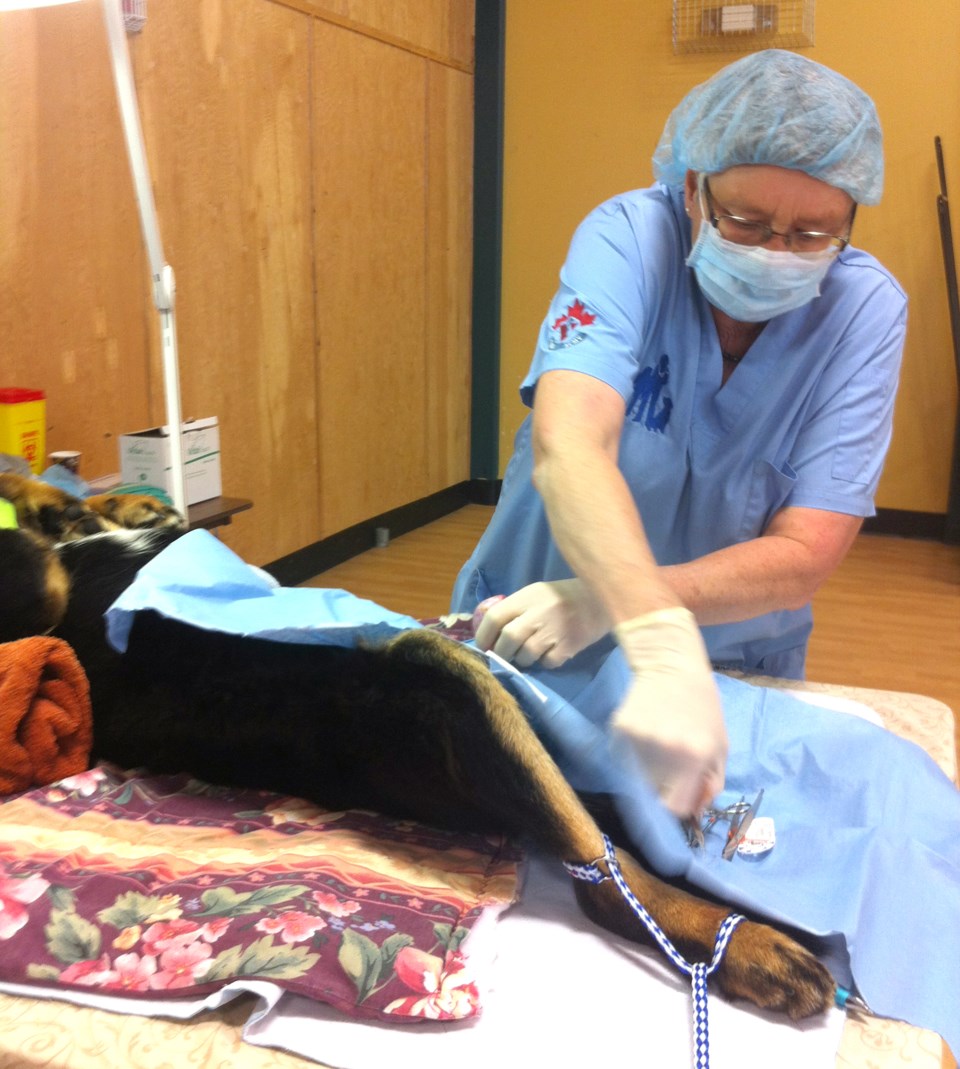THUNDER BAY – In less than two years the Northern Spay Neuter Program has helped organize eight trips to remote Northwestern Ontario First Nation communities where they have fixed 400 animals.
The charitable group, along with a team of veterinarians and veterinarian technicians, have gone into a host of communities upon invitation where they have set up clinics to provide examinations, vaccinations and parasite treatments along with spaying and neutering cats and dogs.
Most recently, a team went to Mishkeegogamang First Nation last week where 54 animals were treated, including 27 being spayed and neutered.
Nikki Burns, president of the Northern Spay Neuter Program, said there is a lack of animal care in many communities.
“I think the need has always been there because these communities have no veterinary care whatsoever and that’s part of the problem,” Burns said.
“The communities have started to recognize that there are alternative way of dealing with dog populations from some of the more traditional ways. As a result, they’ve been inviting veterinarians, vet teams and groups like ours to come up and assist them with animal management.”
In addition to the clinic, a group from the Ontario Society for the Prevention of Cruelty to Animals was scheduled to travel to the community to remove up to 70 stray dogs to be rescued but last week’s ice storm stopped them in Thunder Bay.
But even with removing dogs, populations can multiply exponentially in a very short time without having access to spay and neuter treatment.
“We have to recognize it’s only a first step. If you don’t get all the dogs then they just reproduce and you end up with more and more puppies over the next few years,” Burns said.
“It basically reduces the population and if you can get a group like the OSPCA to come in and take away the strays and bring them somewhere into rescue then you’ve given the community the opportunity and real chance to get a handle on managing the population in whatever way they choose to do so.”
The most recent trip included Barrie veterinarian Dr. Pauline van Veen as well as a pair of technicians from Timmins. Those ventures involve a lot of work and planning to bring the required personnel, equipment and supplies, van Veen said.
One of the biggest parts of the clinics is establishing trust with the communities, where residents are allowed to watch the vet teams treat their animals.
Providing care for the animals helps increase attachment and limits the number of wilder dogs running loose and potentially endangering the community, she said.
“That has a negative impact on the whole community, like the children, and we find now that the population is controlled and the animals are calmer people are starting to bring their dogs into the house. They’re making them more family pets,” van Veen said.
Last week’s trip marked the second visit to Mishkeegogamang for the group after the first went in the fall of 2015.
That visit left a noticeable, lasting impact, Burns said.
“When we were in Mishkeegogamang a year-and-a-half ago there were many more dogs running around at large. This time we saw fewer dogs. There were still a number of dogs but fewer dogs,” Burns said.
“A lot of people said the dogs are a lot calmer and they stay closer to home, which is often what happens when you spay and neuter them.”
